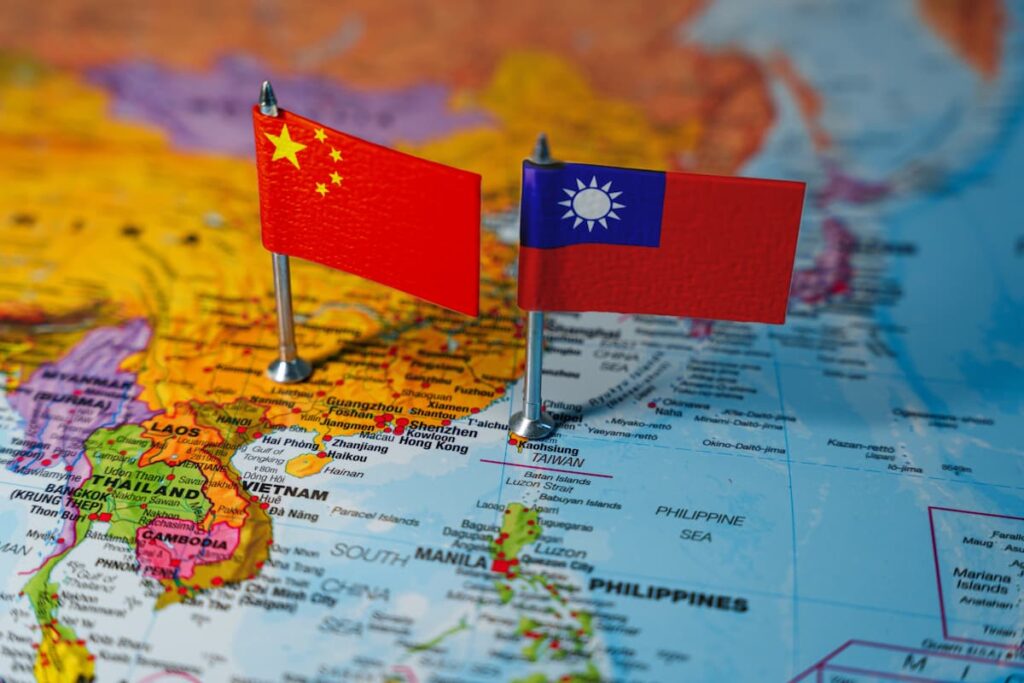Rising Tensions: China Sends 74 Warplanes Toward Taiwan
China has escalated military pressure on Taiwan by sending 74 warplanes toward the island over the course of one night. According to Taiwan’s Defense Ministry, 61 of those aircraft crossed the median line in the Taiwan Strait — a boundary traditionally respected to avoid direct military confrontation. The remaining aircraft remained on the Chinese side but contributed to what Taiwan has called an “unusually large-scale incursion.”
The incident occurred in two separate waves of deployment, raising concerns among defense experts about the scale, timing, and motivation behind the maneuver. Although China has repeatedly used military flyovers as a show of force, this latest event has drawn particular attention due to its size and timing — occurring alongside separate naval activity involving a British patrol vessel.
Taiwan’s military responded immediately by deploying fighter jets, warships, and ground-based missile systems to monitor and deter the aircraft. Defense analysts suggest these moves are part of China’s ongoing efforts to test Taiwan’s response capacity and drain its military resources over time.
China’s Strategy of Pressure and Presence
Beijing maintains that Taiwan is part of its sovereign territory and views foreign support for the island as interference in its internal affairs. Large-scale military exercises, such as these flyovers, serve not only as shows of strength but as psychological tactics aimed at intimidating Taiwan’s 23 million residents and weakening morale among its military forces.
Beyond intimidation, these operations are designed to normalize China’s military presence around Taiwan, making future incursions appear routine while sending a warning to the international community. The inclusion of various aircraft — from drones to fighter jets and early warning planes — also demonstrates a level of strategic coordination meant to simulate full-scale combat readiness.
Military analysts believe that by increasing the frequency and scale of these activities, China aims to establish a new normal that gradually shifts the region’s balance of power, all without firing a single shot.
International Waters, Regional Risks
The flyovers came just after the British Royal Navy’s offshore patrol vessel, HMS Spey, navigated through the Taiwan Strait — a move publicly welcomed by Taiwan. The strait is internationally recognized as open waters, but China has repeatedly objected to the presence of foreign military ships within it.
Following the vessel’s transit, China’s Eastern Theater Command confirmed that Chinese forces closely tracked and monitored the ship. Beijing labeled the UK’s action as a deliberate disruption to regional peace and issued a strong statement condemning what it sees as provocative behavior.
Although it is not confirmed whether the Chinese air deployments were directly linked to the passage of the HMS Spey, the proximity of the two events suggests a potential correlation. The incident underscores how quickly military activity can escalate in the region, especially when naval and aerial operations overlap.
Taiwan’s Response and Regional Outlook
Taiwan continues to face mounting pressure as Beijing intensifies its military campaigns. While the island maintains a robust defense system and receives support from like-minded nations, it must navigate growing threats without triggering direct confrontation.
The presence of UK naval forces, along with other international actors, signals continued efforts to uphold international maritime rights and maintain peace in the Indo-Pacific. However, China’s assertive response and the scale of its latest military activity illustrate how fragile that balance has become.
As more countries choose to assert navigation rights through the Taiwan Strait, the potential for miscalculation increases. Both Taiwan and its allies face the difficult task of resisting coercion while avoiding escalation — a challenge that grows more complex with each military maneuver.



